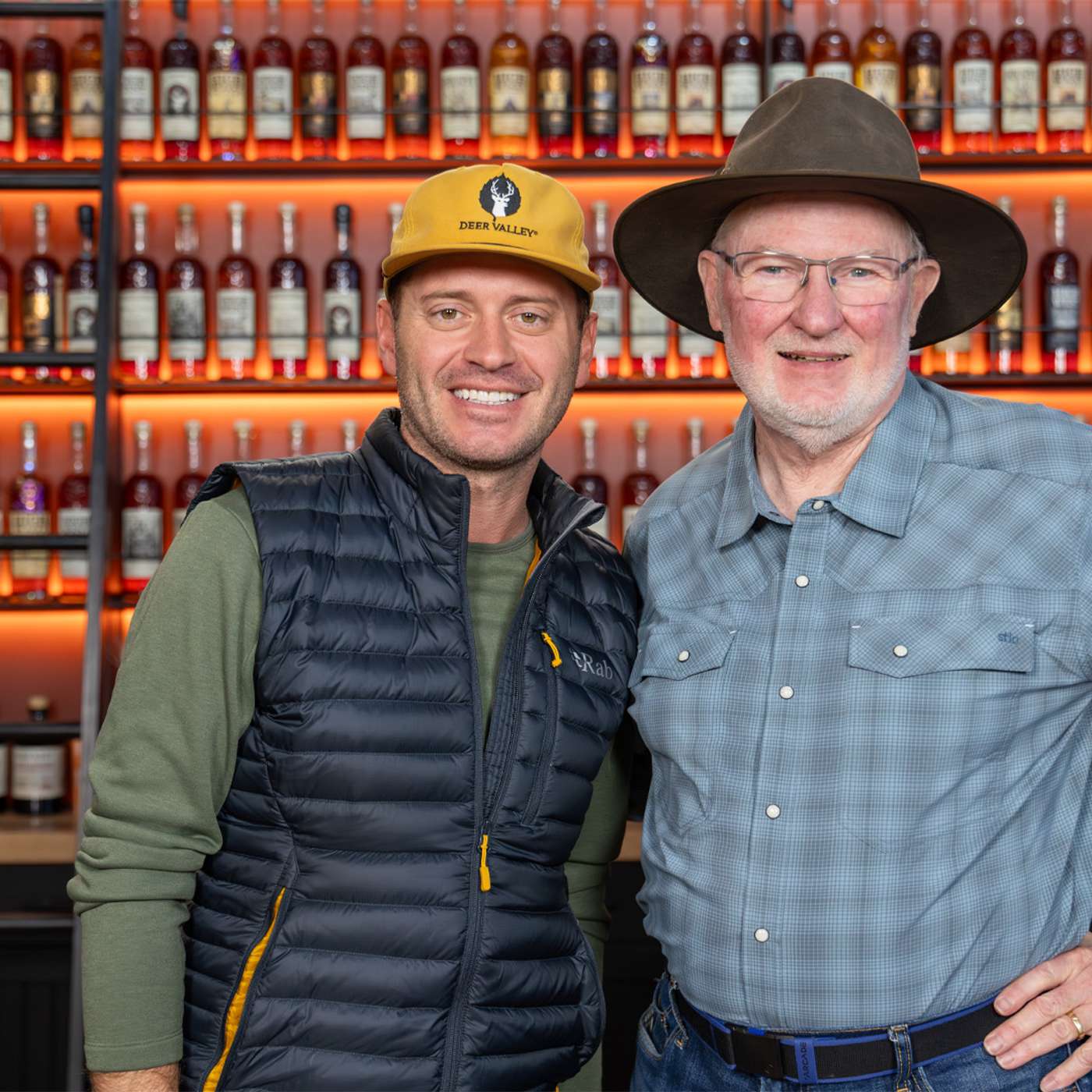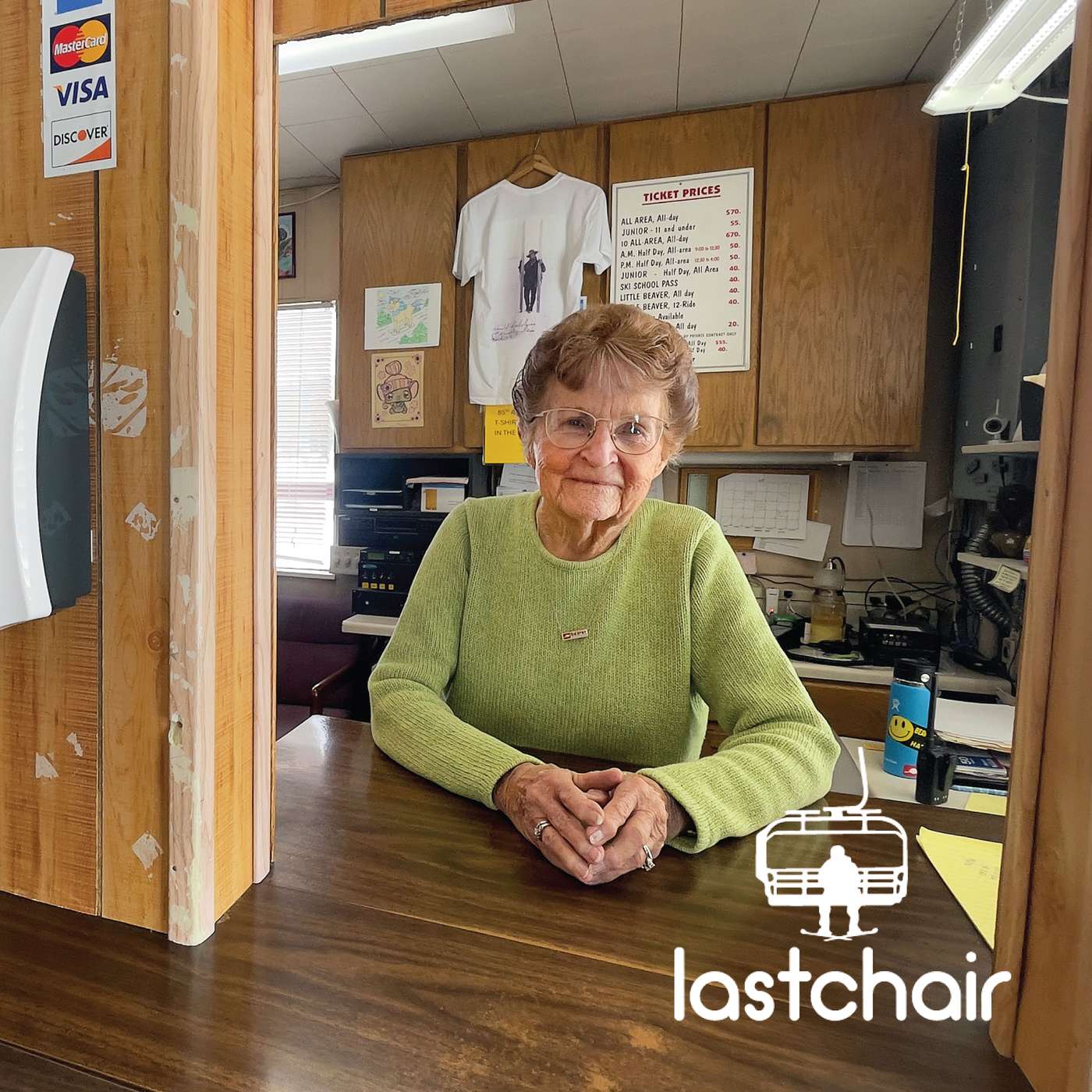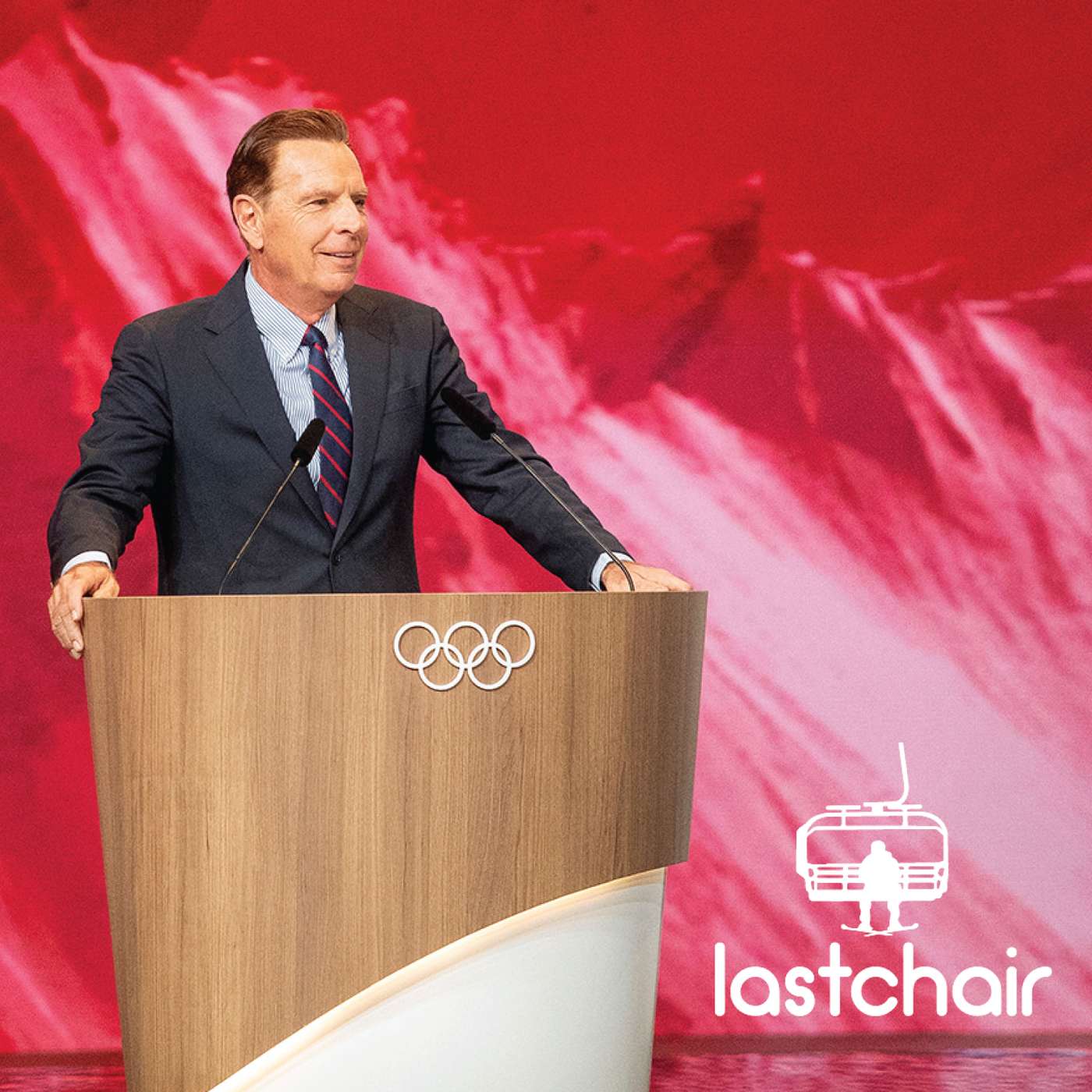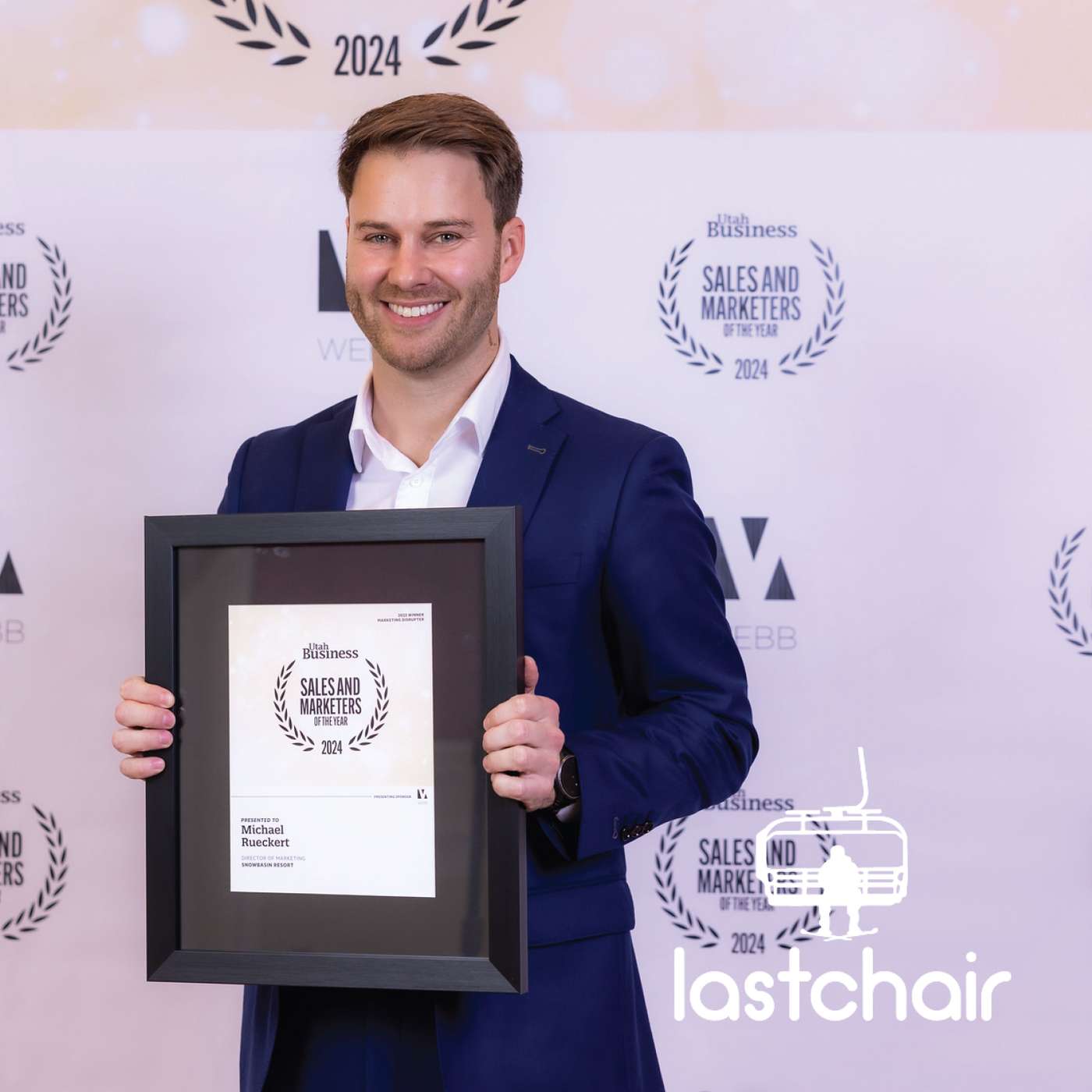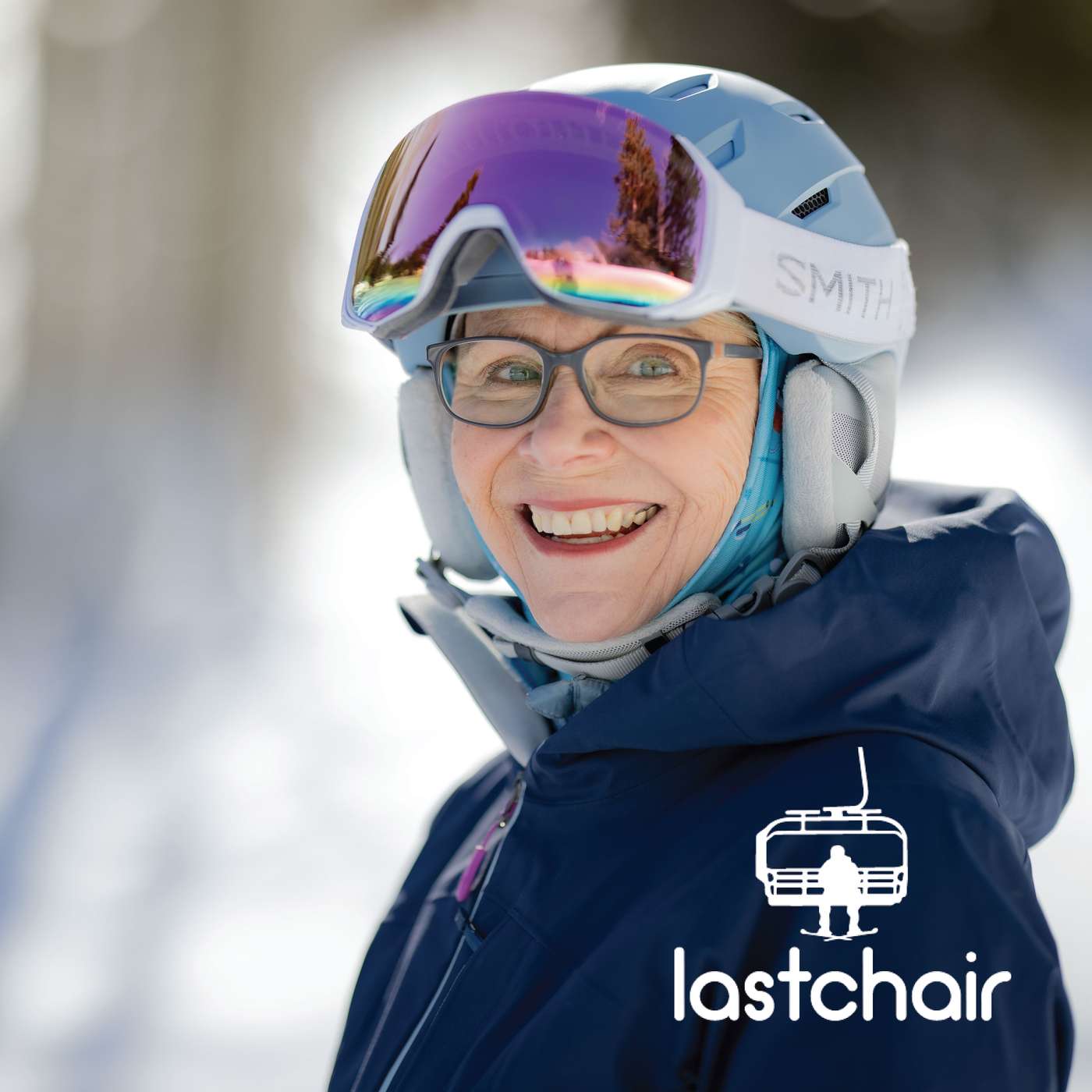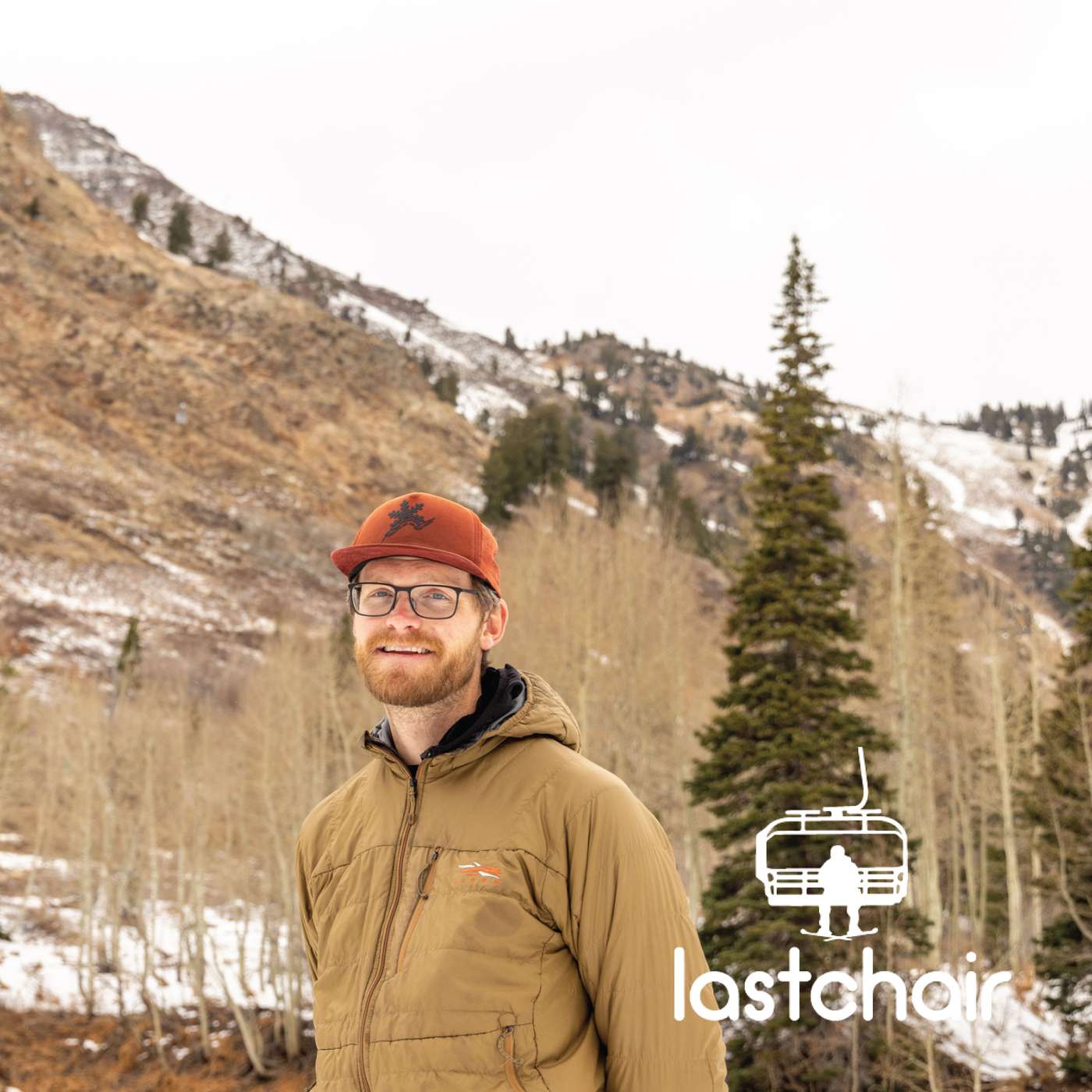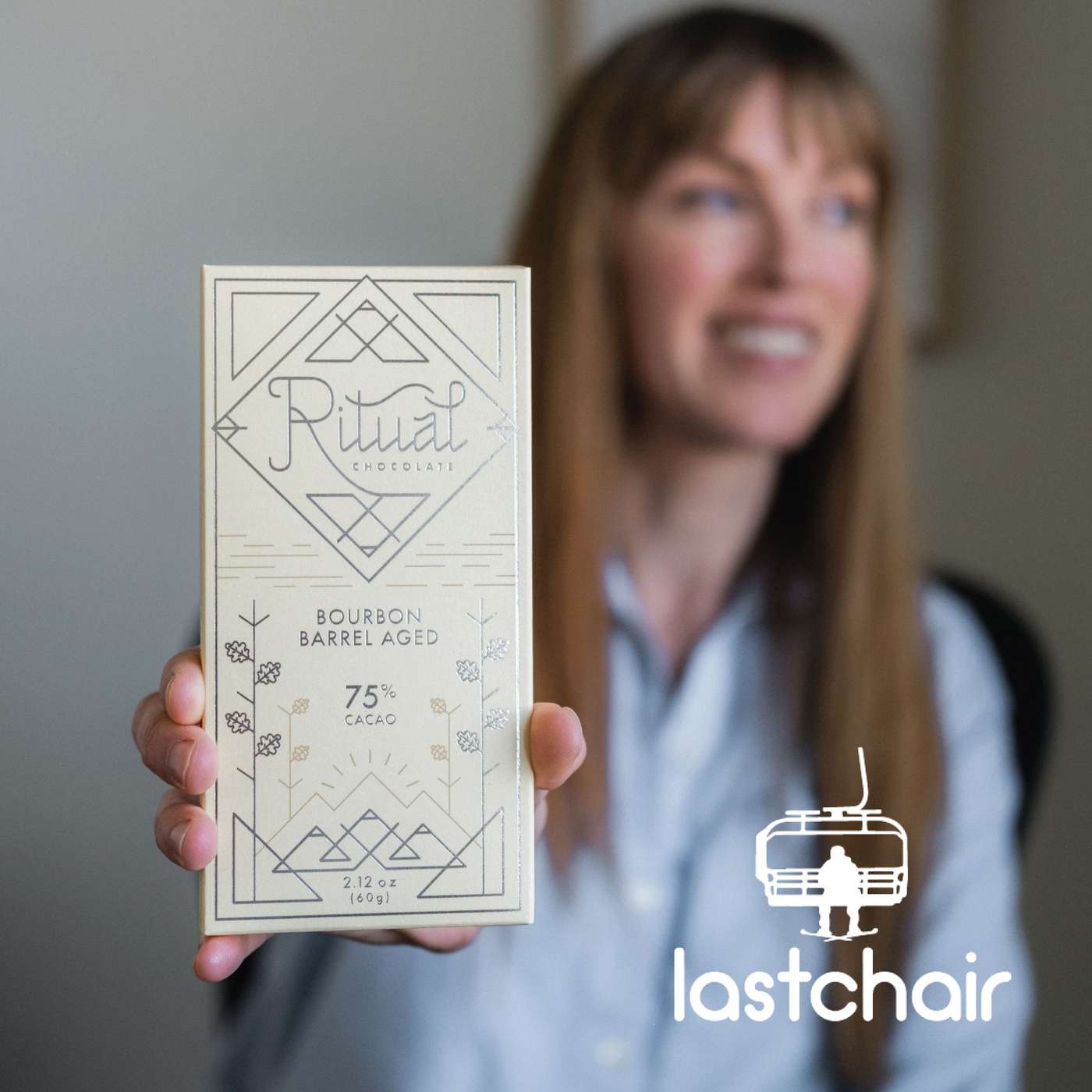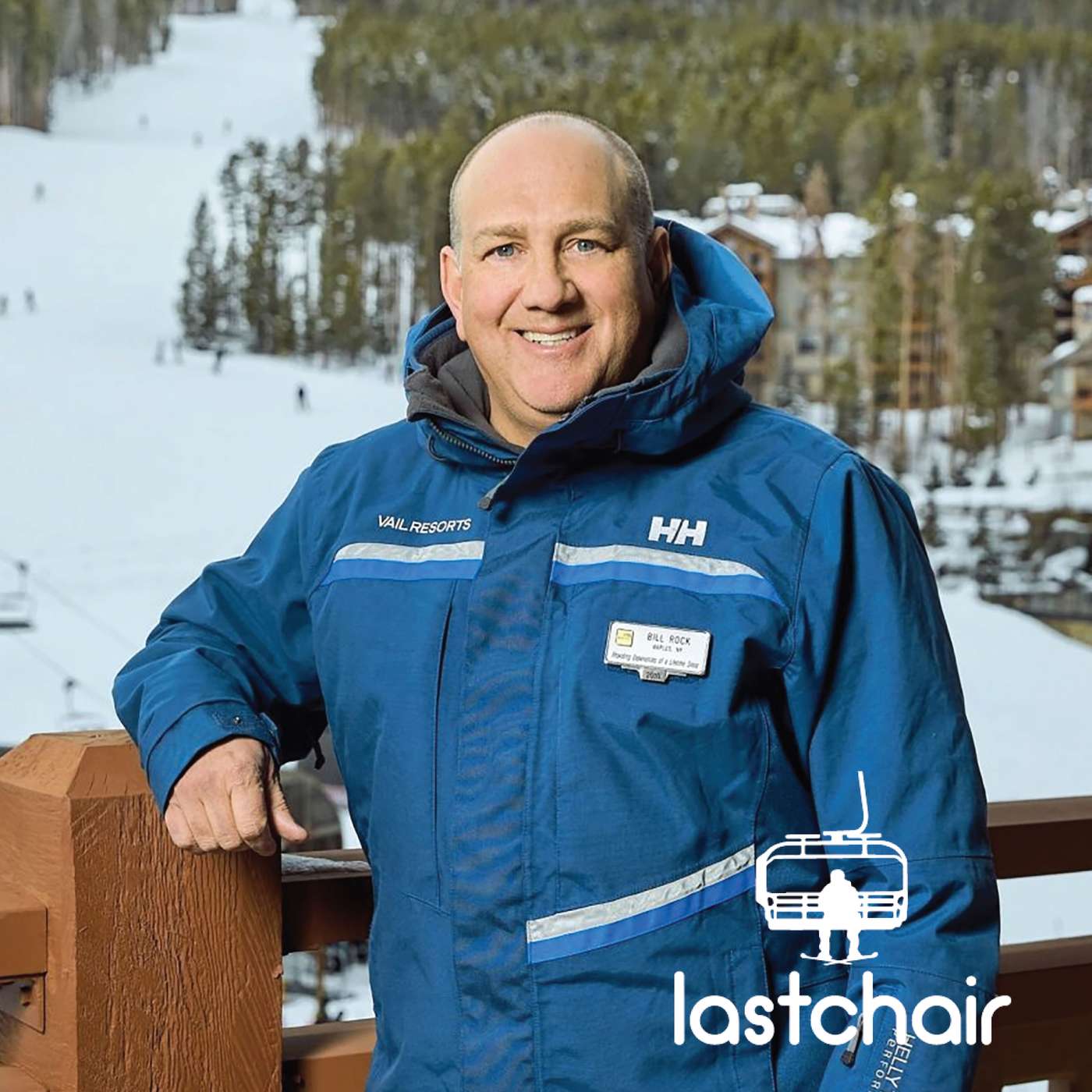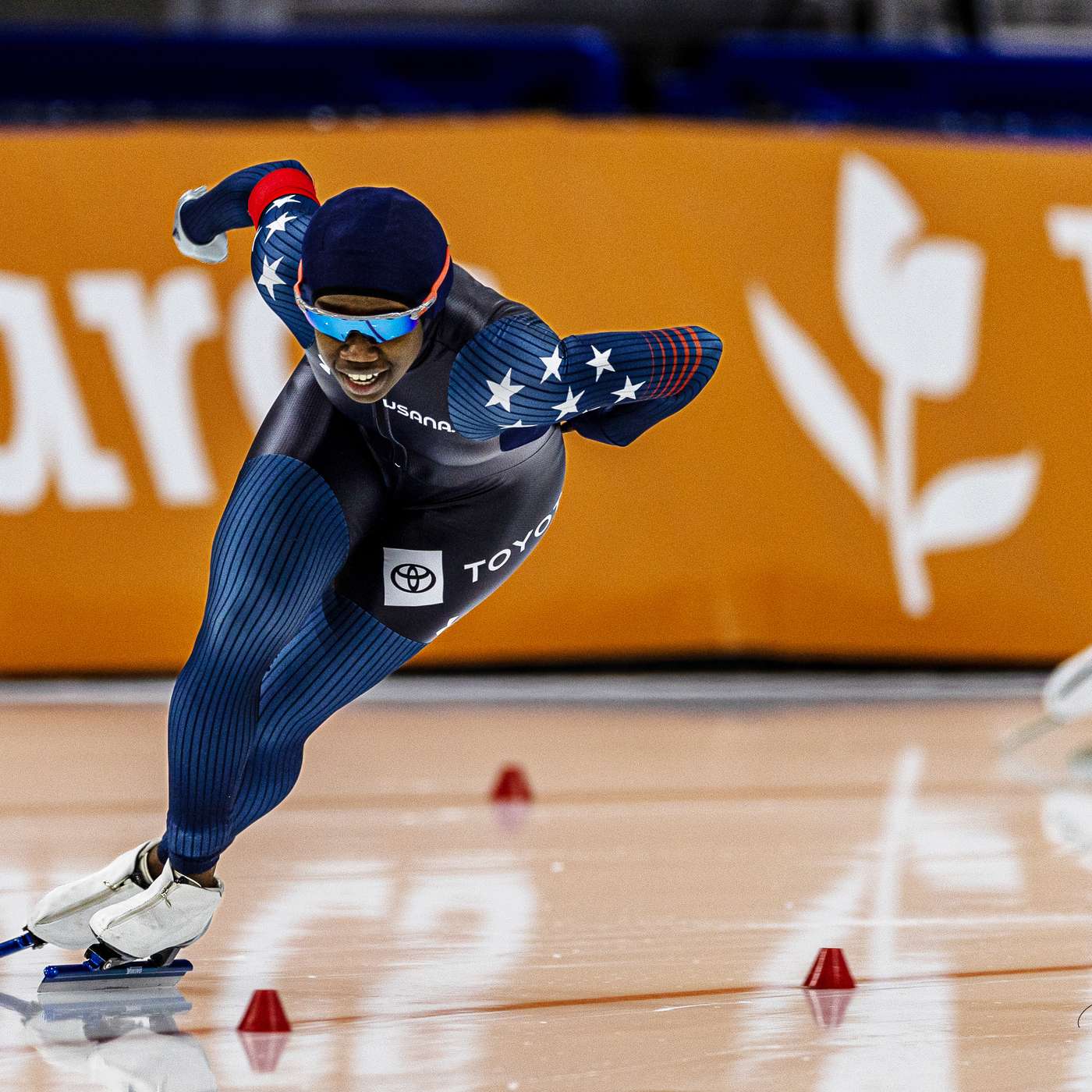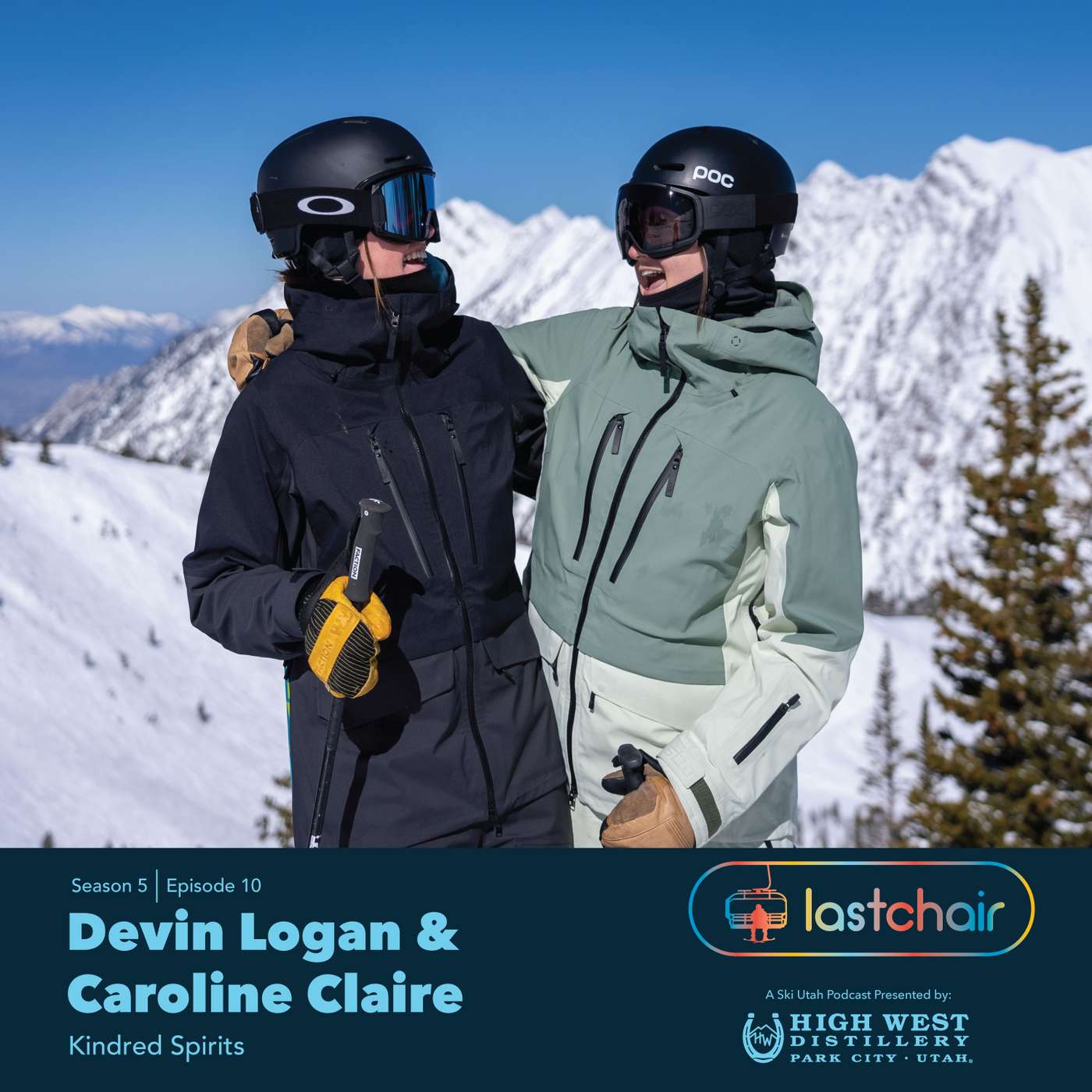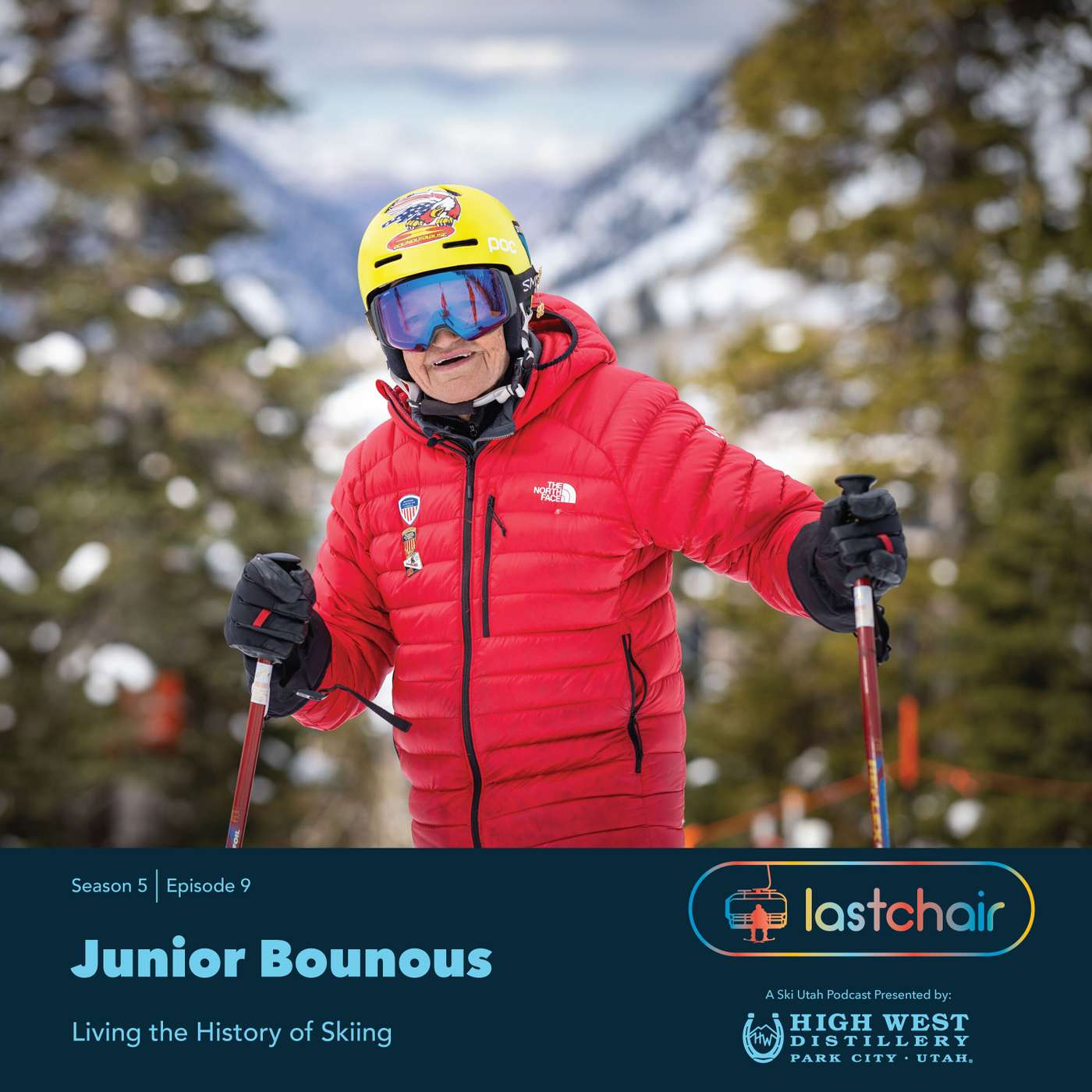Discover Last Chair: The Ski Utah Podcast
Last Chair: The Ski Utah Podcast

Last Chair: The Ski Utah Podcast
Author: Ski Utah
Subscribed: 25Played: 499Subscribe
Share
© Copyright Ski Utah
Description
Ski Utah's new Last Chair will take you inside Utah's resorts for the story behind the Greatest Snow on Earth®. In a weekly series of audio features, host Tom Kelly will bring you behind the scenes with resort leaders, athletes and fascinating figures who are the stories inside Utah skiing and snowboarding. Whether you're a passionate local snow rider, or a guest to the Utah mountain landscape, you'll learn about mountain life through the stories of the men and women who shape the Ski Utah experience. Each Last Chair episode is 30-40 minutes, with insightful questions and fun anecdotal facts. As a career communicator, Kelly weaves stories with ease bringing listeners inside the mountain tales of Utah skiing and snowboarding.
85 Episodes
Reverse
Nearly a quarter century after the 2002 Olympic and Paralympic Winter Games, Utah’s venues are more active than ever and getting kids into sport year-round. At the center of that legacy is Colin Hilton, President and CEO of the Utah Olympic Legacy Foundation.In this episode of Last Chair by Ski Utah, Colin shares how Utah planned for Olympic legacy long before 2002, why its venues are now four times busier than during the Games, and how that vision is shaping the road to the 2034 Winter Games. Recorded at the High West Whiskey Library.Listen now. Subscribe for more stories from the people shaping Utah’s ski and sport culture.
Growing up at the mouth of the Cottonwood Canyons, Chase Thomason went from deep powder kid to full-blown weather nerd after Twister hit screens. Now he’s a meteorologist at KUTV Channel 2 who still finds time to snowboard powder at Snowbird Ski Resort.In this episode of Last Chair by Ski Utah, Chase explains the science behind the Greatest Snow on Earth including snowflakes, storms and Utah’s wild lake effect magic. Recorded at the High West Whiskey Library.
Legendary resort designer Chris Cushing joins Last Chair to share stories from a lifetime spent shaping ski areas around the world, including Deer Valley’s new East Village. From learning the craft alongside his father to watching families enjoy the terrain he built, Chris offers a rare look into the art and heart behind designing the mountains we love to ski
Celebrate 50 years of Utah skiing with Ski Utah and the Last Chair Podcast presented by High West. Host Tom Kelly sits down with President and CEO Nathan Rafferty and early leader Danny Richardson to share stories about Utah powder, the Interconnect Tour, and what makes skiing in Utah truly legendary.Recorded at the Whiskey Library at High West Distillery in Park City, this episode dives into the evolution of Ski Utah, its 16 world-class resorts, and the people who built the state’s ski culture. From Deer Valley to Snowbird, hear why Utah’s mountains deliver The Greatest Snow on Earth.
What’s happening with America’s largest ski resort expansion in decades? Deer Valley Resort is upping the game with 10 new lifts, 80+ new ski runs, and the debut of the all-new Deer Valley East Village, only 40 minutes from Salt Lake City International Airport.In this episode of Last Chair presented by High West, we ride high atop Bald Mountain at Snowshoe Tommy’s Cabin with:- Steve Graff, VP of Mountain Operations, Deer Valley Resort- Garrett Lang, Deer Valley Mountain Operations- Shawn Marquardt, Doppelmayr Ski LiftsHear how the new East Village Express gondola links Park Peak via Big Dutch, get insider details on cutting-edge lift technology, and find out which new Deer Valley runs should be on your hit list this winter.
If you love skiing, take 30 minutes to listen to this conversation with Marge from family owned, Beaver Mountain. This episode of Last Chair exudes what the lifestyle of skiing is about. It’s something you simply don’t find in other sports. It’s a special place in Utah with some mighty fine skiing and riding, and the most celebrated ticket manager in the state: Marge!
From their favorite Utah ski runs to their 2002 Olympic memories, Fraser Bullock and Nathan Rafferty provide great insights about Utah's 2034 Winter Olympic Games and everything in between.
This April, Raelene Davis will celebrate 40 years with the organization. She has served in her current role as Vice President of Marketing and Operations for 10 of those 40 years. Her face lights up with the biggest smiles as she recalls all of Ski Utah's creative marketing campaigns as well as the impressive and innovative engagement programs that she started from the ground up. Most of all, she remembers all of the people she’s met along the way.
The lifts are spinning now at Deer Valley East Village! The first major destination ski resort to be built in America in over 40 years is taking shape with the opening of the Grand Hyatt Deer Valley. How did this pairing of a Manhattan skyscraper developer and one of America’s most renowned resorts come to be? Ski Utah’s Last Chair sat down with Extell Development Founder and President Gary Barnett and Deer Valley President and COO Todd Bennett in the brand-new Grand Hyatt Deer Valley to learn more.
On this episode, Last Chair grabbed veteran UTA ski bus driver Doug Malmborg for a ride on the 972 line up to Solitude and Brighton. Malmborg shared his vast knowledge of the UTA ski bus service, plus some fascinating ski and mining history that he has gleaned growing up in the Cottonwoods.
David Miller, director of operations at Ski Utah partner Wasatch Squatters Brewing, has long had a passion for brewing beer. But also for doing it in a sustainable way. The popular Utah brewery, born in the resort town of Park City in 1986, has put innovative practices in place to recycle cans, used grain, water, and more. Last Chair headed to the Wasatch Squatters taproom in Salt Lake City to get insights from Miller and to enjoy a Last One Down lager, a beer brewed in partnership with Ski Utah.Miller grew up in Oklahoma – not exactly ski destination. But his parents were Colorado skiers, so the family often hit small hills in New Mexico with a few trips north to the Rocky Mountains of Colorado. His passion for brewing first played out when he volunteered to help out at Oklahoma’s Prairie Artisan Ales. His brewery journey took him to North Carolina and then Dallas. While in Texas, his boss was in Utah, and the lure of the Wasatch – both the brewery and the mountains – brought him to Salt Lake City just a few years ago. He sees the mountains as a great place to raise a family, and his young kids are already ripping around Solitude.But as much as he loves brewing, his real passion is being a steward of the planet on which we live. It’s ingrained in Miller’s life, from the lessons he teaches his young kids to the practices he puts in place at Wasatch Squatters.“Sustainability does not always come easy – it's not just a flip of a switch,” said Miller. “So if we're able to do something more efficient and more sustainable, even though it may be really hard to do, we're going to take that challenge on.” It’s mid-day at the Wasatch Squatter’s taproom as guests slide up to the bar for a lunchtime brew. Meanwhile, Miller is diving deeper into the myriad ways Wasatch Squatters is creating ways to innovate its operation to be more sustainable.It’s about finding an effective way to recycle cans that are kicked off the bottling line. Or reusing water used to cool hot tanks during the process. Or finding a new home for the tons of grain used during brewing – which makes for some happy cattle on Utah ranches. Wasatch Squatters also substitutes nitrogen for carbon dioxide.“I couldn't imagine being part of an industry that didn't care about this,” said Miller.The conversation often swings back to his kids, who have learned early the importance of loading up the truck with cans to take to recycling. “I have two boys and just instilling sustainability practices in them is really important to my wife and I. And they’re already taking note of it – throwing their banana peels in the compost pile.”Those practices carry over to their day-to-day life, including their time on snow up in the Cottonwoods.“Every time I’m on the slopes with my family, I know I have to take care of this place. I pick up that piece of trash or recycle that piece of cardboard. And that carries through our business. And we know we’ve got a lot of people who get up on the mountain who have the same mindset – which is great.”Beer is a part of the culture of skiing. This episode of Last Chair takes you inside the brewery to learn about how Wasatch Squatters keeps sustainability a key priority. And while the sustainability practices at the brewery are on a high level, Miller easily relates them to things each of us can do ourselves. So grab a Wasatch Last One Down and enjoy this conversation with David Miller.
Steven Clark enjoyed the ideal skier’s lifestyle as a young boy living at the mouth of the Cottonwood Canyons. Today, he’s the avalanche safety program manager for the Utah Department of Transportation (UDOT). As skiers and riders wind their way up Little Cottonwood Canyon, one of the most avalanche-intensive sections of highway in the world, he’s the one leading efforts to help keep us safe. Clark joined this episode of Last Chair from Snowbird to talk about innovative new technology that is helping to keep avalanche safety workers – and all of us on the highway – safe during winter storms.Many of us think about backcountry avalanche safety. Clark himself, when he was young, had the Utah Avalanche Center phone number posted on the family’s home phone. But it’s doubtful many of us think a lot about avalanches as we travel mountain highways every winter. We think about the plows that clear the roadway for us. But what’s up above might be largely out of our minds as we wind up State Route 210 for eight miles towards Snowbird and Alta.In those eight miles from the mouth of Little Cottonwood Canyon up to Alta, there are 64 identified, named avalanche paths that can impact the highway. While the ski resorts all manage avalanche safety in their boundaries, it’s up to UDOT to mitigate the danger on the highway. From howitzers to hand charges, UDOT avalanche safety teams work to keep all highways in the state safe for drivers and residents.For around 75 years military howitzers have played a pivotal role, lobbing shells across valleys to dislodge snowpack before it poses a danger to the highway. In 2007, UDOT began to look at alternatives to lobbing shells through the air. Today, howitzers are being phased out. As an example, in 2023 Alta retired its 105-mm cannon that had fired thousands of rounds of shells since being introduced in the 1950s by avalanche safety legend Monty Atwater.Replacing the howitzers is an array of remotely triggered devices installed on mountainside towers throughout the canyon. Towers from Wyssen Avalanche Control can be remotely activated to drop charges into the snow. Installations from GAZEX™ create a controlled explosion from which the concussive force triggers a slide. UDOT is using both systems, with new installations around Mount Superior will be in operation this season. There are now nearly 90 remotely-activated avalanche mitigation installations in the canyon between UDOT and the ski resorts. The new systems provide yet another level of public safety, eliminating the need to fire shells across the valley or to have avalanche safety workers conduct high-risk operations. In addition, UDOT employs a sophisticated array of avalanche sensors to analyze the snowpack and provide valuable feedback and updates.This episode of Last Chair provides some fascinating insights into the work done behind the scenes to keep us safe as we travel the Cottonwood Canyons to ski and ride. A well-known figure in the Utah snow safety community, Steven Clark is a great example of the dedication of the UDOT team that helps keep us safe.
When Dr. Jeffrey Rosenbluth left med school for his first job at the University of Utah in 2001, he already had a vision in mind. A skier himself, he wanted to bring that wind-in-your-face sensation of the sport to those who didn’t have the same personal mobility. Fast forward to today, Dr. Rosenbluth's pioneering initiative has led to TetraSki – a device that combines medical science with engineering to create remarkable opportunities for individuals with physical disabilities.In this episode of Last Chair, we head to the Mobility Garage of the University of Utah’s Craig H. Neilsen Rehabilitation Hospital, speaking with Dr. Jeffrey Rosenbluth, along with program director of TRAILS Adaptive Tanja Kari, a six-time Paralympic champion cross country skier who was one of the heroes of the 2002 Paralympic Winter Games in Utah.TetraSki is truly a revolutionary mobility tool in sport. It features a customized chair attached to a pair of Rossignol skis. The engineering brains of TetraSki allow the operator to control the skis through a simple joystick. And if the skier doesn’t have the body functionality to manipulate the joystick, there’s a breathing tube – blow in or suck out, and the skis respond. A new innovation can also be attached to a functioning muscle, where muscular reflects are converted into ski movement.Yes, this is real! And there are now around two dozen TetraSkis around the world, providing mobility opportunities to those who might never have conceived that they might ski.Growing up in Los Angeles, Rosenbluth would always look for opportunities to get up to Utah for skiing. Wanting to spend his career in spinal cord injury medicine, when he saw a job opportunity in Salt Lake City he jumped at it.“After the first couple of years of getting settled here, it was obvious that we had this really tight, enthusiastic campus – people with engineering backgrounds and clinical backgrounds, other scientific backgrounds, and then the access to the outdoors is just unprecedented,” he recalled. “I don't think there's another academic center that has this. So there was just an obviousness to where we were heading and getting people excited about building new devices and getting out there and trying new programs – that was an easy sell.”Early in his tenure, he created TRAILS Adaptive – an acronym combining technology, recreation, access, independence, lifestyle, sports. TRAILS provided the first pathway to provide wellness programs and real opportunities for individuals. Kari was a young Finnish cross country skier when she visited Utah for the first time at the 2002 Winter Games. What stood out to her was that the same organizing committee managed both the Olympics and Paralympics – the first time ever! “We felt the difference in the Games for that,” she said, “in the level of expertise and perfectionism. It was just unbelievable for us.” Three years later, she found her way back and has now made Utah her home.She found a home at TRAILS Adaptive for very similar reasons. “As a Paralympian and being involved in this world for a long time in different roles, the fact that we have this mentality and space in the rehabilitation hospital – being able to meet those patients right when they're here with us and sharing the methods of active living – is really important to me.”It’s easy to geek out at the engineering in TetraSki today. However, the brilliance behind it goes back 20 years as Dr. Rosenbluth began mapping out the vision he brought from med school. “It was just this recognition that you couldn't just open up shop with just sports,” he said. “You had to really think about advocacy. You had to think about sports deeper than just participation – how could you be as independent at that sport as possible? And what if you didn't have transportation? You'd never be able to come and do the sport.“I thought at first we were really more of a think tank, going through all the different ways we could take folks, especially with more complex disabilities, and get them to participate more frequently to create life sports for some of our complex patients – and then do it at the highest level of independence and performance.”Ski Utah’s Last Chair podcast with Dr. Jeffrey Rosenbluth and Tanja Kari takes you inside one of the most innovative labs in the sport. It’s a fascinating – and emotional – journey showcasing the work being done at the University of Utah to provide the gift of skiing to those who can’t click into their bindings the same way that we do.
When it comes to the lifestyle of a ski town, Utah is a real pioneer. When High West began distilling in Utah nearly 20 years ago, it was the first ski town distillery in America. Ritual Chocolate followed suit, moving to Utah in 2015. In this episode, Last Chair explores the magic of whiskey and chocolate, and the unique experiences these two Utah companies are offering visitors.Back in season one of Last Chair, we talked with High West founder David Perkins, who told the unique story of how Utah became its home. Today, High West is a must-visit stop in either its Park City or its Wanship locations, and is one of America’s most innovative distilleries. The High West brand represents the spirit of the west.So imagine this. When Ritual co-founder Anna Seear came to town, she started envisioning what it would be like to soak cacao nibs in used High West barrels. The distillery was also intrigued. Anna gets used High West barrels and create distinctive Ritual Bourbon Barrel bars. Then she gives the barrels back, and High West uses the chocolatey wooden kegs to create a unique Barrel Select – whiskey up front with a hint of chocolate aroma and taste in the back.There’s a lot to learn in this entertaining episode of Last Chair, including a user’s guide to enjoying some of the world’s most notable whiskey and chocolate.LAST CHAIR GUESTSHolly BoothBeverage Manager, High WestHolly Booth defines her role at High West as a creator and facilitator of memories that revolve around whiskey, cocktails, and adventure, celebrating the spirit of the American West. You can find Holly on the mountain, but she’s most at home with a fly rod on Utah’s lakes and streams.Anna SeearPresident & Co-Founder, Ritual ChocolateAnna Seear and her partner Robbie Stout didn’t know much about chocolate, but they loved it! They started their company in Denver, moving to Utah for a lifestyle change – to be closer to the mountains. You can find Anna and her family skinning up Pine Canyon Road from their Midway home.Cayla GaseauSensory Manager, High WestWhat’s a sensory manager? Well, Cayla Gaseau has one of those dream jobs! Her role is to help with tasting each barrel and working with the High West team on whiskeys that might have up to 25 different blends, like Midwinter Night’s Dram. You can find her hiking places like Mt. Superior in Little Cottonwood Canyon.WHAT GOES INTO A HIGH WEST COCKTAIL?Holly Booth: “Our job is really to highlight the whiskey – to highlight the beauty of what we distill. Things that we can highlight are already existing within that particular whiskey. And then we kind of build around that.”HOW DO YOU BLEND BOURBON INTO CHOCOLATE?Anna Seear: “We soak our cacao nibs in the bourbon barrels for a few months and got in all those lovely kind of oaky cherry notes,” said Seear. “Then we take the the nibs and make the chocolate, add the sugar and produce our Bourbon Barrel Bar, which has been very popular.”DESCRIBE THE PROCESS OF DISTILLING WHISKEY WITH CHOCOLATE.Cayla Gaseau: “This is one of our Barrel Selects – a single barrel. We took the Ritual chocolate barrel and put in a unique blend of straight bourbon whiskeys between four and nine years old. The majority, though, is around seven years old. We really wanted to highlight the element that cacao complements in bourbon, which is a lot of the vanilla caramel and that deep sweetness. We finished it in this barrel for nine months and then dumped it and went directly to bottle – didn't proof down. I believe it's right around 102 or 103 proof – so a little spicy, but really delicious on the palate.”WHAT’S THE ORIGIN OF THE RITUAL NAME?Anna Seear: “It's a call back to the history of cacao and how it was used in the rituals and ceremonies by the Mayans and the Aztecs and how it was it was truly held in high regard and respected. Chocolate should be appreciated like a fine food.”PULL QUOTE“The synergy between our companies and what we've done in Utah, bears that pioneering spirit that's inherent within Utah.” - Holly Booth HIGH WEST CAMPFIRE OLD FASHIONED2 oz High West Campfire Whiskey.25 oz Simple Syrup (Holly likes sugar in the raw or demerara sugar)2-3 dashes of Angostura BittersOrange & Lemon peel garnish or orange peel & Luxardo cherry garnishEnjoy with a Ritual S’mores barSUGGESTED WHISKEY-CHOCOLATE PAIRINGSCask Series Distillery Select B#35195 - Bourbon Barrel Bar (created in the barrel)Midwinter's Night Dram Act 12 - The Après Chocolate Bar (sparkling white wine and dried raspberries)Campfire Whiskey - S'Mores Bar (just like sitting around the campfire)
Bill Rock is at home on the mountain. He skis. He snowboards. He remembers that first day his kids passed him on a ski run. He counts his blessings for being able to spend his life on ski mountains around the country – around the world! Today, as president of the mountain division of Vail Resorts, he is one of the most influential leaders in our sport. In his conversation with Ski Utah’s Last Chair podcast, he talks about the evolution of his career and the pride he takes in his company’s innovations to improve the guest experience.
It’s now official! The Olympic and Paralympic Winter Games are returning to Utah in 2034. The International Olympic Committee made the call on July 24. In this episode of Last Chair, we’ll explore the games to come looking at a few venues outside of the traditional skiing and snowboarding realm.With all of the 2002 Olympic venues still in place and operating, the 2034 edition will require no permanent venue construction. The IOC welcomed this sustainable approach. In 2034, around a dozen venues will be used—all within an hour’s drive of the Athlete Village on the University of Utah campus in Salt Lake City.The caretaker of many of the venues is the Utah Olympic Legacy Foundation. President and CEO Colin Hilton talks about the Utah Olympic Park, with its bobsled, skeleton, and luge sliding track, as well as the towering ski jumps. Hilton also oversaw the assembling of all venues for the 2034 bid and will give an overview of what we can expect.One of the most popular Olympic sports today is biathlon – an unusual combination of cross country skiing and marksmanship. Utah native Vincent Bonacci, a member of the U.S. Biathlon Team, will talk about the sport, its uniqueness and why the Soldier Hollow Nordic Center is such a vital venue.We’ll then head to the sliding track at the Utah Olympic Park – known as one of the fastest in the world. Utah native Kaysha Love will talk about how she went from a top-tier high school and collegiate sprinter to becoming one of the best bobsledders in the world in just a few years.Finally, we’ll talk about winning Olympic gold with 500m long-track speedskating star Erin Jackson. A Florida native, Jackson talks about her transition from inline skating to ice, tells the story about her improbable journey to Beijing to win gold, and relates (with a smile) her weekend ski experience at Deer Valley Resort.
Olympians Devin Logan and Caroline Claire are kindred spirits, finishing each other’s sentences and sharing a common passion for hucking themselves off jumps and poofing through powder pillows in the Little Cottonwood backcountry. So how did the two Long Island girls, seven years apart in age, find each other and make their way to Utah? The duo are now telling their story through the lens of filmmakers Sarah Beam Robbins and Iz La Motte in Kindred, set to premier this fall. Last Chair caught up with them on a bluebird day at Alta to hear their story.
The red tram pulled out of the station, heading up to Hidden Peak on its seven-minute run. Perched along the front left window was the legendary Junior Bounous, looking down and surveying the ski runs he plotted out 53 seasons ago. From his base at the Lodge at Snowbird, the 98-1/2-year-old Bounous still gets out to Snowbird and Alta two or three days a week. In this historic interview, Ski Utah’s Last Chair spent a day at Snowbird with Bounous, who regaled us with stories of his nearly a century in the sport.Born into a fruit-farming family in Provo, he was 11 when he received skis as a present. He soon found his passion. His life chronicles the history of skiing in Utah, from working with Ray Stewart at Timp Haven to his mentorship under the legendary Alf Engen and spending the summer of 1971 designing the runs at Snowbird for visionary Ted Johnson.Under the guidance of Alf Engen in the 1940s and ‘50s, Bounous learned how to convey the love of skiing to others. He became transformative as a snowsports educator, helping to standardize teaching in an era where European instructors brought differing ideologies to education. Few have introduced more individuals to the joys of skiing than Junior Bounous. And it was Junior who helped introduce the world to powder skiing.There’s a buzz in the tram line when Junior makes his appearance. Knowledgable Snowbird skiers recognize him instantly. And he’s quick to strike up a conversation.Atop Hidden Peak, he pauses by the memorial bench dedicated to his ski mate and wife of over 70 years, Maxine. He still soaks in the panoramic view from Mt. Superior across the valley the the terrifying crease of the Pipeline Couloir on Twin Peaks, which he skied with his friend Jim McConkey.While recording Last Chair in Bounous room at the Lodge at Snowbird, it was mesmerizing to soak in the memorabilia on the walls. One framed article from SKI Magazine stood out from an early-’60s photo shoot by the legendary Fred Lindholm of Junior, Maxine (she’s the one way out front in the key photo), and friends skiing a massive powder bowl on the flanks of Utah’s Mount Timpanogos. Junior vividly recalls the helicopter dropping them off and then going back to Salt Lake City, leaving them a five-mile hike out after what was a glorious descent.Skiing has brought immense happiness to the son of a fruit farmer from Provo. That joy has manifested itself in sharing the sport with others. As we skied down Chip’s Run, Junior had no issue taking the steeper drops versus cat tracks, simply checking surface conditions first. He happily posed for pictures. At one point, a ski patroller jokingly told him to slow down. It’s been 53 years since he built these trails, but you could still see the pride in his eyes. And he never stopped smiling all the way down.Linking turns for Ski Utah photographer Chris Pearson, you could hear him singing with the rhythmic, melodic tones of his signature ba-dump … ba-dump … ba-dump, ba-dump, ba-dump with each pole plant.If you want to bring some simple joy to your own skiing, listen to this episode of Last Chair. This is why we started skiing in the first place.Here’s a sampling of skiing according to Junior:The Origins of Powder Skiing“Powder skiing really did start at Alta. However, we saw in European films as skiers going through powder in the early days, and most of it was a straight line and very little turning. Alta became known for skiing waist-deep powder and making turns. Now, the evolution took time because we were on stiff, narrow skis. Today, there are thousands of skiers with powder snow skis that were not in existence then.”How Junior Was Tabbed to Design Snowbird“Ted Johnson and I were friends from Alta's early beginning. He had asked me if I wanted to invest with him, and I said, ‘No, I don't have $20,000.’ I was in the national gelande contest at Alta, and Ted was there. And he said, ‘By the way, Junior, could we get you to come up and get the mountain ready to open for Snowbird?’ I knew it was going in, and I thought about it a little bit and I said, ‘Yes, I've got time. What do you want me to do?’ And he said, ‘I want you to handle the crews and get all of the runs designed and marked off and ready to open’. And so I went home and talked to Maxine. I called him, and I said, ‘Yes, when? When do I start?’ ‘Tomorrow,’ he said. I was taking this job for the summer only. But I started with topo maps in the architect's office and looked at the terrain. I had skied this terrain in the past from Alta. Coming across a Peruvian side was easy skiing. We had open runs; the Gad Valley side had thick pines and aspens and big willow trees that were 15 feet high. But anyway, first topo map, then heli-skiing and figuring out the runs. And then, after I was able to put all this on paper, we still had ten feet of snow.”History of Ba Dump“Ba dump entered into my teaching system. Number one is relaxing a student. Number two is rhythm. Rhythm is so important because skiing becomes a movement, not a left turn and a right turn. But it's linked together in a flow, we'll say. The rhythm building is taking the mind off of the student and giving them something to target or think about instead of what they're worrying about. And it's relaxing, as I say, and movement. But ba dump was more of a joke. However, it worked the same because the cadence of left right, left right did not work as well as ba dump, ba dump, because they were really mystified by why would you use words like that?”
A big part of the history of skiing is the fellowship of ski clubs. And before you write it off as a thing of the past, meet the OurSundays Ski & Board Club. This started out to be a podcast on diversity, exploring OurSundays’ affiliation with the National Brotherhood of Snowsports. But it quickly became a celebration of why we all love to ski and ride – a culture shared by all. Domeda Duncan and Mark Giles are two transplants to Utah. Domeda skied as a child in Detroit. The closest Mark came to the sport was on a jet ski in Florida. But as new Utahns, they both wanted to explore winter in the mountains on skis. After all, wasn’t that what Utah was about?Ski Utah’s Discover Winter program provided that opportunity.Born out of the Black Lives Matter movement in 2020, Discover Winter is now in its third season. Ski Utah made a unique decision to focus its diversity program on adults. Domeda and Mark are prime examples of how it has worked. If you’re a longtime skier or rider, chances are that as much as you love the sport, there are aspects that you take for granted. Hang out with the OurSundays gang, and they’ll remind you that, at its core, skiing and snowboarding are about social engagement. It’s the sizzle of the bacon alongside the buttermilk pancakes in the Brighton parking lot as the first rays of sun glint off Milly. Or it’s karaoke after a joyous day on the slopes. As Domeda says, it brings out the best in all of us.The new OurSundays club is now a part of the National Brotherhood of Snowsports, a nationwide organization of Black ski clubs that recently celebrated its 50th anniversary. Formed by Hall of Famers Ben Finley and Art Clay, it blossomed over the years with its Black Summit, widely known as the most fun week in skiing. Domeda’s own roots in the sport trace back to the Jim Dandy Ski Club, one of the founding programs of NBS.Industry leaders, like Ski Utah, have long grappled with how to make the sport more inviting for people of color. We could all learn a few things from OurSundays. Listen in to this Last Chair conversation with Mark Giles and Domeda Duncan. It’s an enlightening look at why we all love the culture of skiing and snowboarding. And if you run into Domeda on the slopes, ask her for that buttermilk pancake recipe. Now settle in for this episode of Last Chair.


